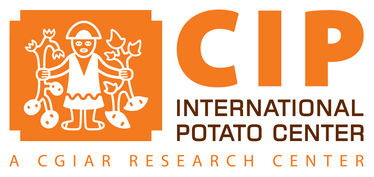Location
Lima, Peru
The International Potato Center, known by its Spanish acronym CIP, was founded in 1971 as a root and tuber research-for-development institution delivering sustainable solutions to the pressing world problems of hunger, poverty, and the degradation of natural resources. CIP is truly a global center, with headquarters in Lima, Peru and offices in 20 developing countries across Asia, Africa, and Latin America. Working closely with our partners, CIP seeks to achieve food security, increased well-being, and gender equity for poor people in the developing world. CIP furthers its mission through rigorous research, innovation in science and technology, and capacity strengthening regarding root and tuber farming and food systems.
CIP is part of the CGIAR Consortium, a global partnership that unites organizations engaged in research for a food secure future. CGIAR research is dedicated to reducing rural poverty, increasing food security, improving human health and nutrition, and ensuring more sustainable management of natural resources. Donors include individual countries, major foundations, and international entities.
Members:
Resources
Displaying 1 - 5 of 20Pathways from research on improved staple crop germplasm to poverty reduction for smallholder farmers
Innovations to improve staple crop germplasm can reduce poverty and otherwise improve farmer livelihoods through complex and multiple pathways. This paper reviews the evidence for one prominent pathway—through increased incomes (in cash and kind) for poor farmers who adopt the technology.
El boom de la maca, transformando paisajes y sociedades rurales de la zona altoandina.
La maca (Lepidium meyenii) es una raíz andina a la cual se le atribuyen propiedades energéticas y estimulantes. En los últimos años el interés de mercados asiáticos dio lugar al “boom de la maca”, incrementando los precios y provocando la rápida conversión de pastizales altoandinos en tierras de cultivo, transformando de esta manera el paisaje, el ecosistema, la economía y la sociedad rural de la zona altoandina de Junín.
Overcoming phosphorus deficiency in West African pearl millet and sorghum production systems: promising options for crop improvement
West Africa (WA) is among the most food insecure regions. Rapid human population growth and stagnating crop yields greatly contribute to this fact. Poor soil fertility, especially low plant available phosphorus (P) is constraining food production in the region. P-fertilizer use in WA is among the lowest in the world due to inaccessibility and high prices, often unaffordable to resource-poor subsistence farmers. This article provides an overview of soil P-deficiency in WA and opportunities to overcome it by exploiting sorghum and pearl millet genetic diversity.
Crop ontology: integration of standard variables
Crop ontology: integration of standard variables
The Crop Ontology (CO, http://www.cropontology.org/) is a resource of the Integrated Breeding Platform (IBP, http://integratedbreeding.net/) providing breeders with crop specific terms for fieldbook edition and data annotation. Until Mai 2015, a plant phenotype was annotated with 3 CO identifiers for the trait, the method and the scale, respectively. Yet, breeders’ fieldbook and most phenotypic databases are designed to annotate a datapoint with only one identifier.




